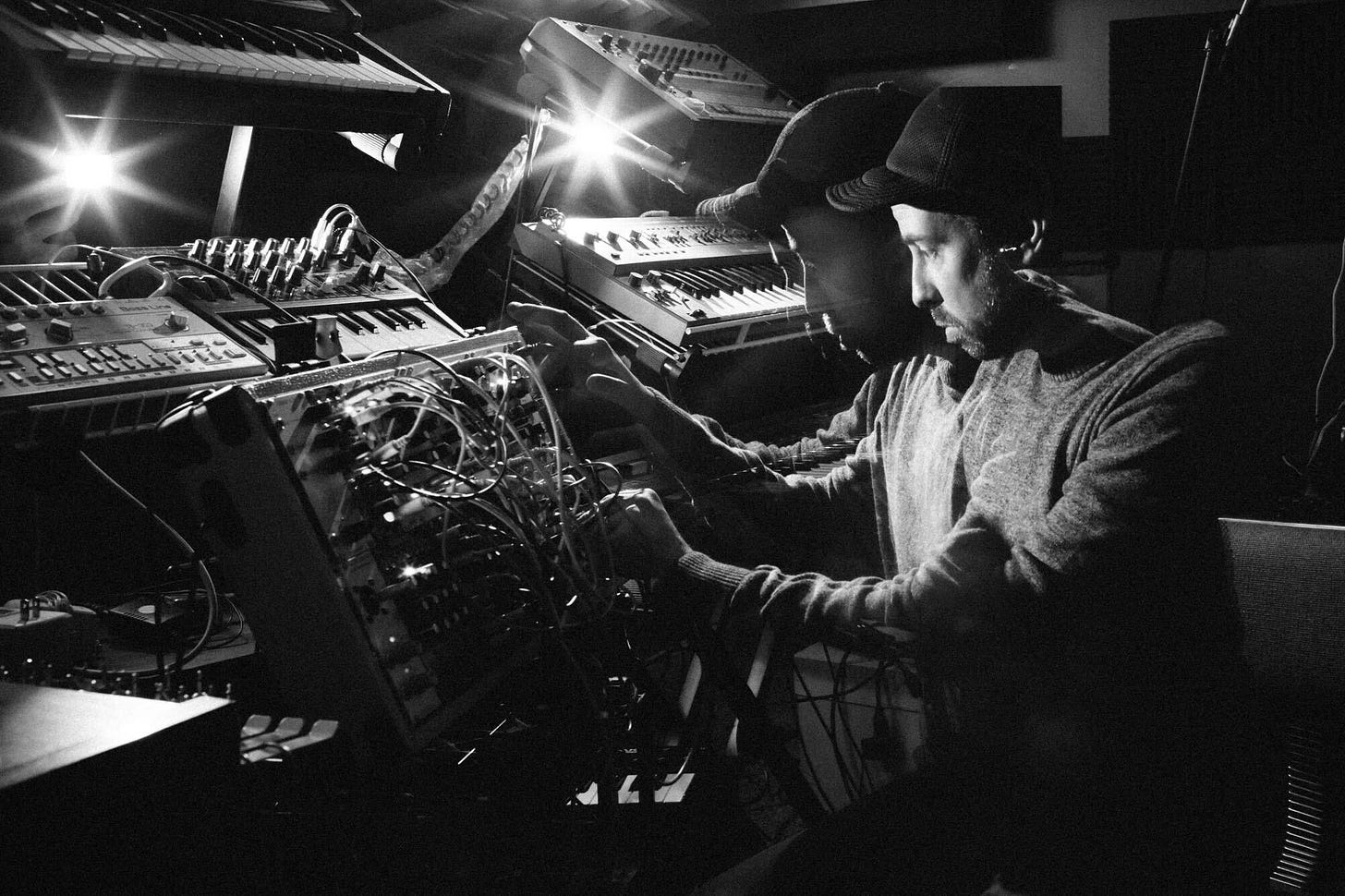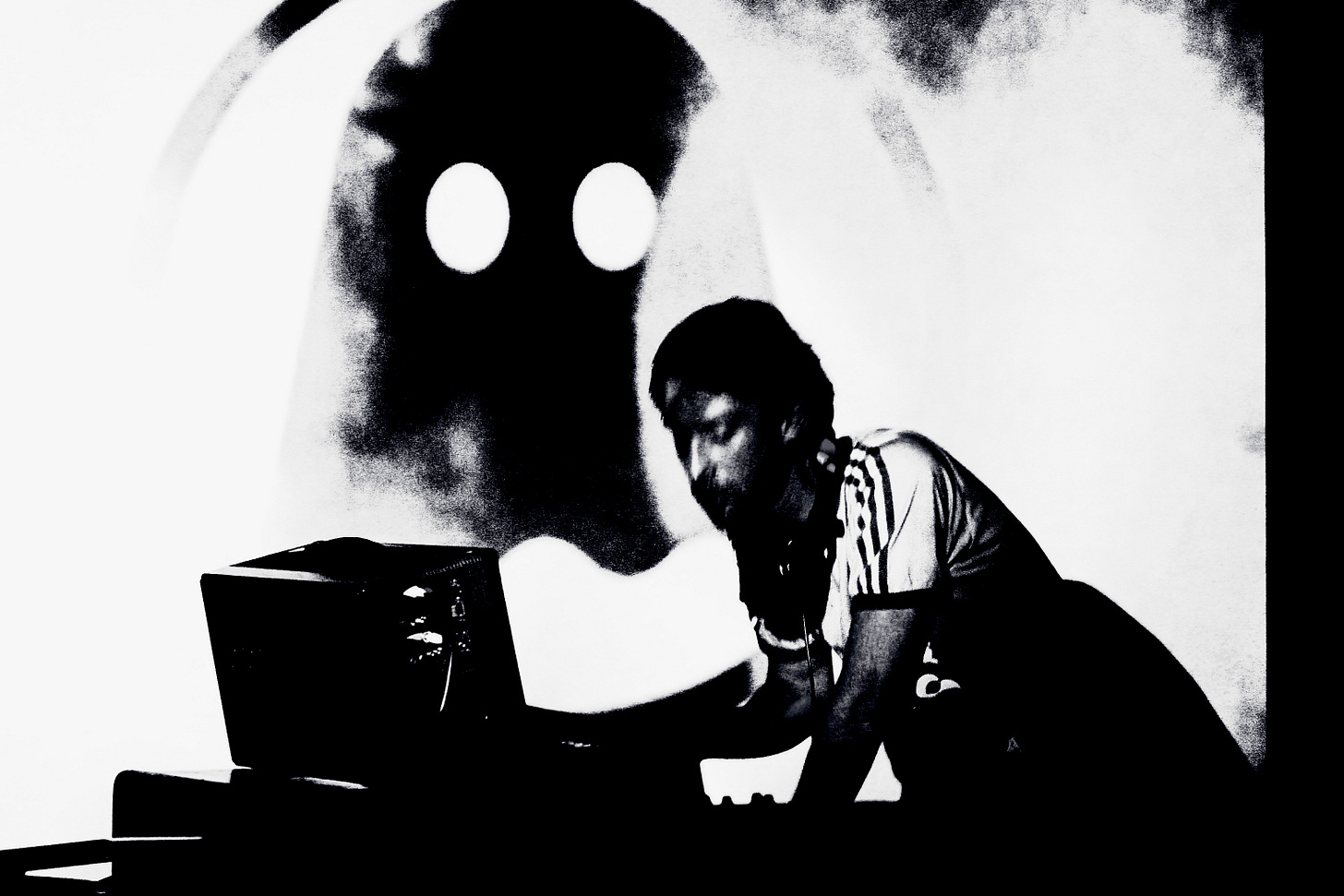Herb Sundays 105: Tadd Mullinix
The electronic polymath (Dabrye, JTC, X-Altera) delivers an unassailable slab of influences and classics.
Herb Sundays 105: Tadd Mullinix (Apple, Spotify).
Art by Michael Cina / with Flower Still Life with a Timepiece, Willem van Aelst., 1663.
“I had formative music in mind when making this playlist. Songs by Eno, Talking Heads, The Band, and Gabriel, were played in our household for as far back as I can remember. Some selections are indicative of my earliest exposures to hip-hop and electronica, and other early discoveries that I can't get tired of. Something having to do with becoming a Dad had me doing a lot of reflection, and recalibrating.” - Tadd Mullinix
Across three decades of making music, Tadd Mullinix has built a sonic galaxy to live inside. For Ghostly's 25th year, I wanted to share some stories in Herb, but this Herb has been a long time coming anyways. In most places, this is where you would say, “Hey, I work with this person” to establish objectivity, but I have no objectivity; it's all burned up here. If you need the sense that I’m not biased here, know that I’ve spent a not-insignificant part of my life listening to and helping release the music of Tadd Mullinix, which is a totem of fandom, if nothing else.
I could spend time on the character of Mullinix as a loyal friend, mentor to others, and loving father/husband, but that would be bland and uninteresting. Instead, let’s talk about the work. Tadd’s thing, in the Aphexian or Larry Heard tradition, is the realm of the alias. The world of Mullinix comprises catalogs under his name, as well as Charles Manier, SK-1, X-Altera, and collaborative aliases like TNT (with Todd Osborn), 2AM/FM (with D’Marc Cantu), The Maniacs (with Traxx) amongst others and he has remixed artists such as Depeche Mode, The Horrors, Trans Am, King Midas Sound, Modeselektor, and Zero 7.
Using the expression, Tadd is indeed your favorite producer’s fave producer, something you realize whenever you mention his name in a thread of heads. His influence is as wide-reaching and disparate as his music. The Dabrye project, a Hip-Hop production alias, which returns next month with a new "beat tape," has perhaps traveled the furthest of Tadd’s creations, allowing him to collaborate with MCs such as the late Dilla and DOOM, plus living legends Dany Brown, Roc Marciano, and Ghostface Killah.
While Dilla, whom Tadd collaborated with for the enduring "Game Over" (the making of was chronicled by Herb friend
) single remains the patron saint of the project, it has overshadowed some of the more obscure source material. Hence, it was exciting to see Mark Fell’s Snd project in his Herb mix, one of my favorite electronic projects ever (thanks To Tadd). Snd shares Mullinix’s "do a lot with a little" thesis, creating small funk whirlpools from chunks, like a spreadsheet frolicking on holiday.The original thesis for Ghostly was that if we were going to engage in electronic music, the authors would need to put forth a tangible “voice” they would push through the machines, even if it is sub-lyrical. The “demo” I got from Tadd was just a cassette from Tadd’s car, fetched when I asked if he had anything at Todd Osborn’s former Dubplate Pressure store (check Todd and son Kaito’s deep cut shop Technical Equipment Supply when in Michigan next). The tape included a variety of genres, which would end up being released in quick succession, helping set the pace and ambition for the label.
I put Tadd amongst the best in his relative scenes at his most sublime. When many of us were caught in the cool runnings of mid-2000s Minimal Techno, Tadd zagged towards the sacred American music of Jack/Jak, tunneling into a raw source of dance music that was almost completely ignored at the time. His 303 acid-drenched work for labels like Creme, Nation, and Spectral is wine-soaked maniac music, finding Tadd screaming into the microphone like other Ann Arbor legends like Wolf Eyes’ Aaron Dilloway over a hypnotic god flow.
For as chromium as a great Mullnix song can be, his work is teeming with humanity. Tadd's music breathes on its own with an unteachable sensibility. Whether it's the gentle melodic wind-up of “Lulla” or the pneumatic press of 2 AM/FM’s powerful acid techno masterpiece “Poison Dart,” there is no question a human is at the helm, like that big crane apparatus in Aliens (1986).
Tadd’s work has taken on a more regal air with age, less itchy but still merciless. His latest release is the JTC album Intra.Actae (2023) on his Bopside label which is mostly comprised of his own productions. The release is a welcome fusing of all of Tadd’s favorite styles in some way. In fact “Girl Squad V” is a techno/drum & bass hybrid is somewhat akin to Carl Craig’s (Herb Sundays 08) seminal “Bug in the Bass Bin” which features on this playlist.
So, how does a Tadd come to be? I’ve thought about it before, partially in a “how lucky am I” to have met such a foundational artist, both personally and professionally. Growing up with a single mom (the heroic Evelyn in question from the Dabrye classic) in Florida, he says he was surrounded by the music of Talking Heads, Roxy Music, and ENO (some of whom you’ll find in the mix), which switched him on. When Tadd eventually settled back in the Metro Detroit area as a teen, it helped him find his place. The musicality of the cello, which he played as a kid, informed his melodic sense, but as a skateboarding teen playing in speed metal bands (Aneurysm was the name of one of them), Tadd threw it all out.
Tadd’s taste is one of the purest I’ve ever experienced. It is erudite but crude, seeking pleasure in sly discord and funk. Finding his way into electronics via hallowed rooms of Detroit rave and spaces like Zoot’s Coffehouse, where a scene was growing of kids who raved and also liked techno, ambient, shoegaze, Hip-Hop and IDM (the amino acids of Ghostly, really), which included DJs such as Derek Plaslaiko Mike Servito, Carlos Souffront, and Clark Warner. As a young adult, he worked in record shops with Todd Osborn (whom he would release his first Jungle records with) and then at the Ann Arbor institution Encore Records alongside heroes like Doug Coombe (who shot Tadd’s first album cover) and Fred Thomas (Herb 15), where he would take in music of all varieties while honing his sound.
If I’m honest, one of Tadd’s heralding traits to me is an inherent lack of corniness. Tadd’s work is very much about sensibility and is stylish by nature but not intentionally so. His music is about lowercase t “time,” like all of the greats, but he’s so un-corny he’d never say something like that.
I can also see why the TB-303 is a consistent brush Mullinix employs. It is both a classical instrument now and an homage to the Black American music that has inspired him. It is a punk “misusing” of normative tools and something vaguely otherworldly, as the 303 is indeed a desiring machine that seeks its own path in a song, not unlike the distant voices in Tadd’s many aliases.
Ultimately, I believe Mullinix is in communion with a sacred electronic musicianship that is of American modernist design but has never fully been acknowledged by its place of origin. It is the music of the canon but subverted, all indebted to raw materials or music that speaks to the body and the inner life.
If reduced to a snow globe miniature of musical history in my mind, I see the Mullinix oeuvre pulling from the trailing lights of a Chicago studio where Phuture spun out “Acid Trax,” the proverbial basement of Dilla and so many other musicians, and the ensuing dawn cigarette where you can see and catch your breath before going back to listen to what you just made. It is a final music for the 20th century, the end of the canonical arch. The human and machine locked in a deathless embrace. We are satisfied to call it a draw.







Love this. Thanks for the note Kevin.
I remember back in ‘06 when the “Air” 12” dropped in Piccadilly Records. I was fresh out of university, working there for pittance, my true compensation was exposure to records I’d have otherwise missed. It sounded like an artefact from the future back then. It’s power has hardly diminished in the almost two decades since.